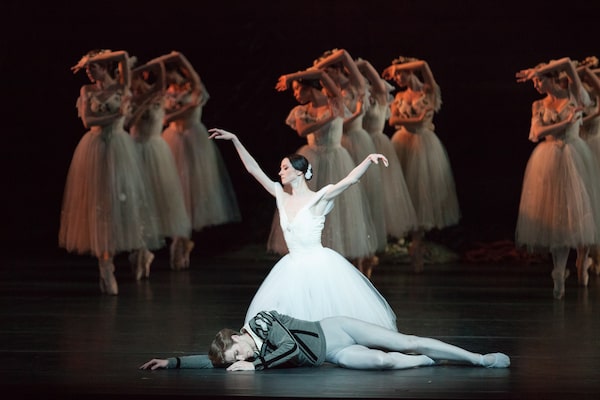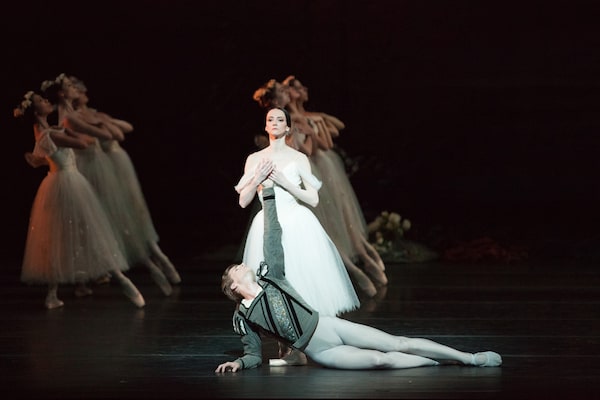
Svetlana Lunkina and Harrison James in the National Ballet's production of Giselle.Aleksandar Antonijevic/Supplied
Giselle deserves recognition as the most meta ballet in the romantic-classical canon. Dance plays a lead role in Théophile Gautier’s 1841 work about a peasant girl who falls for the wrong guy, dies of a broken heart and rises from the grave with a gang of vengeful brides. Their preferred form of punishment? Dancing unfaithful men to their deaths.
The National Ballet’s production, which opened in Toronto on Wednesday night, hasn’t changed since its company premiere nearly half a century ago. What could draw ballet fans back to the same production every few years? Well, to begin with, Giselle is a gorgeous work of art full of sinister themes that expose ancient associations between dance, madness and death. Dance has long been connected to hysteria – think of the choreomania epidemic that supposedly swept through medieval Europe. Giselle plays on the timeless fear that, in giving ourselves over to our obsessions, those obsessions might seize control.
But the more immediate draw for dance fans is simpler – the dancing. Or, more specifically, the dancers themselves. Century-old choreography can look fresh and surprising on a new body, filtered through a new personality. With new casting, dance fans can find reams of material to appreciate and dissect – the minutiae of technique, presence and interpretation.
So it’s a little disappointing that artistic director Karen Kain hasn’t given us much in the way of new Giselles. Heather Ogden is the only debut in the role, and she’s been a principal dancer for 15 years – audiences are very familiar with her dancing. When the National last performed Giselle in 2016, Kain cast former Bolshoi ballerina Svetlana Lunkina and Harrison James as the leads on opening night. Three years later, that opening night casting hasn’t changed; I’m left reiterating what I wrote then.

Lunkina is particularly effective as the ghostly Giselle of Act 2.Aleksandar Antonijevic/Supplied
In Kain’s defence, the production looks almost as strong now as it did in 2016. Lunkina might not have the exuberance and naivety of a teenager, but her etherealness is particularly effective as the tormented, ghostly Giselle of Act 2. James is elegant and technically robust as the deceptive Count Albrecht; the famous sequence of entrechat six (a series of jumps in which the legs beat front to back) were met with enthusiastic applause. Ogden is excellent, once again, as Myrthe. It’s a role for which her powerful technique and commandeering presence are perfectly suited; she’s imperious as the implacable queen without ever devolving into caricature.
Some welcome additions to the production include Act 1 duets performed by second soloists Siphesihle November and Jeannine Haller. With his small stature and muscular legs, November is a jumping powerhouse, rebounding from the floor like a rubber ball. Haller dances with crisp energy and lightness; she’s also a fine jumper.
But how exciting would it have been to see a rising star cast in the lead – a second soloist or even a talented member of the corps – someone a little closer to Giselle’s own experience? There are surely all kinds of practical, institutional and financial reasons that make this difficult. But giving loyal fans something worth coming back for matters, too.
Giselle continues until Nov. 10 at the Four Seasons Centre.
Live your best. We have a daily Life & Arts newsletter, providing you with our latest stories on health, travel, food and culture. Sign up today.